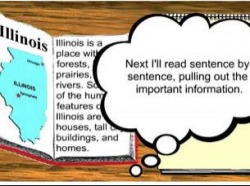Using Sources and Taking Notes
Big6 term: Use of Information
How do I take notes?

If you're wondering how to take notes while reading a text, check out Fact Fragment Frenzy!
Using Note Cards

- 1. Before you take notes, be sure you've written a source card.
- 2. Write the letter of the source in the upper right corner of the card, with a number indicating which card it is. Example: A1=your first card for your first source
- 3. At the bottom of the card, write the author's last name and page number. If the last name isn't available, go with the title of the source.
- 4. Write only one idea or fact on each card, and only use the front of the card.
- 5. Paraphrase or summarize everything. If you use a direct quotation, put it on its own card with quotation marks around it. Write direct quote on the bottom of the card so you don't forget.
- 6. Write the main idea/subject heading of the idea/fact on the top line of the card.
Other Strategies
- Give note cards a try. If you want an alternate format, check out this form from Big6 resources. This note-taking strategy contains all the same information as a note card, but if you struggle with organization, you may prefer this method.
- Another way to take notes is to use this Power Point template from Big6 resources. Depending on your preferences, you may benefit from this style! Read more about this template here.
- Finally, University of the Cumberlands' library has some documents to download and use to take notes for different source types.
The “Big6™” is copyright © (1987) Michael B. Eisenberg and Robert E. Berkowitz. For more on Big6, visit: www.big6.com
What do I do once I'm ready to write?
- Quoting- using the author's exact words, requires quotation marks, should be used sparingly
- Paraphrasing- restating the author's main idea in your own words, should be closer to the length of the original text
- Summarizing- condensing the author's information, highlighting the main idea and not changing contexts, should be shorter than the original text
For more help, and parenthetical citation information, watch the video below, then try this quiz.
How can I be sure I don't plagiarize?
Watch the presentation below for a wonderful explanation about plagiarism. Also, check out Avoiding Plagiarism from Purdue University's Online Writing Lab. Try the Plagiarism Exercise to see if you understand plagiarism! Still confused? Try this!
Plagiarism on Prezi

